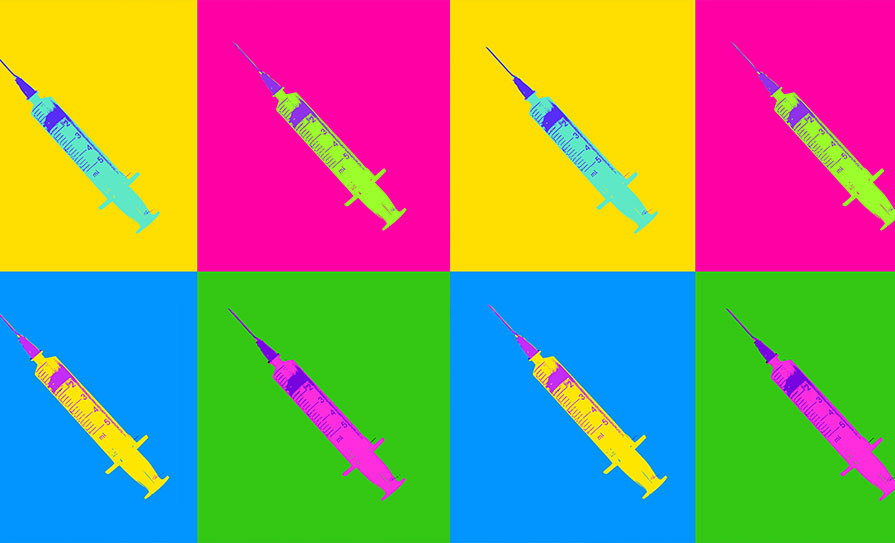August saw the publication by the HSE of a report on a collaborative project between the National Drug Treatment Centre and Merchants Quay Ireland (MQI) that analysed the residual contents of syringes returned to the needle exchanges run by MQI. While the analysis confirmed the presence of heroin in most of the syringes, it also revealed worrying evidence of the injection of other drugs, notably cocaine, methamphetamine and a new psychostimulant 3-MethylCathinone (3-MMC).
This pilot-scale study aimed to gain insights into the injection of stimulants and ‘New Psychoactive Substances’, particularly because of HIV outbreaks linked to various cathinones, collectively called ‘Snow Blow’ and also the emergence of new drug-using groups through the ‘chemsex’ scene. It is part of the ESCAPE Project (European Syringe Collection and Analysis Project Enterprise) linked to the EU’s Drugs Agency. The syringes were collected from locations in Dublin, Longford and Offaly. Because of the small numbers, the results for the two rural centres were aggregated under the heading ‘Midlands region’. The syringe contents were analysed for 232 different drugs and metabolites — 32 different drugs were detected and many syringes had residues of several different drugs indicating high levels of polydrug use.
Interestingly, the presence of benzos at 20 per cent was far greater in the Midlands than in Dublin (only 3 per cent)
Not surprisingly, 93 per cent of the Dublin and 98 per cent of the Midlands syringes were positive for heroin. Methadone was detected in 62 per cent of the Dublin and 51 per cent of the Midland syringes, suggesting that the study sample involved those engaged in opioid treatment services or accessing diverted methadone. The presence of blood and the detection of methadone begs the question as to whether the drugs detected were in fact injected or ingested (orally, by snorting or by smoking), then finding their way into the blood. Among the other drugs detected were zopiclone, alprazolam, flurazepam and diazepam. The fact that no metabolites of flurazepam were detected is, the researchers believe, consistent with the presence of the drug itself in the syringe. Interestingly, the presence of benzos at 20 per cent was far greater in the Midlands than in Dublin (only 3 per cent). Oxycodone and ketamine were detected in 7 per cent of Dublin samples. Pregabalin was found in 35 per cent of Midlands syringes, while a third of the Dublin ones contained methamphetamine.
It is believed that ‘meth’ only plays a small part in the Irish drug market at present and that its detection may reflect the developing ‘chemsex’ scene. Significant and worrying evidence of cocaine injection emerged with 86 per cent (Dublin) and 89 per cent (rural) of syringes testing positive. Known cutting agents used to increase the profitability of cocaine were also detected, including levamisole, phenacetin and the two local anaesthetics, benzocaine and lidocaine. Diluents typical of street heroin included caffeine and paracetamol. The report refers to anecdotal evidence that it is the crack form of free-base cocaine that is being injected after being dissolved with the aid of citric acid. The use of excess acid may increase the risk of vein damage, and stimulant injection of any type is well recognised as being riskier due to the short duration of action leading to more frequent injections, reuse of needles, more sharing, and lowered inhibitions regarding sexual behaviour, thereby increasing HIV and HCV transmission risks.
This makes the 24 per cent positivity rate for 3-MMC in Midlands syringes (twice that of the Dublin ones) particularly concerning. It is a synthetic stimulant cathinone derivative chemically and pharmacologically similar to the so-called ‘bath salts’ such as mephedrone (4-MMC) that appeared on the market during the heyday of the ‘headshops’. It first appeared in 2012, but re-emerged as a problem in 2021. Much of the 3-MMC imported into Europe appears to have been manufactured on an industrial scale in India, although some was produced in illicit labs in Europe. Of concern is the possible use of potassium permanganate as an oxidising agent in some synthetic routes leading to residual manganese that could pose a risk of neurotoxicity, with features resembling Parkinson’s.
There is limited information on the pharmacology and toxicology of 3-MMC according to the Risk Assessment Report prepared by the EU’s Drugs Agency. It is believed that it is likely to share the cardiovascular, neurological and psychiatric effects of related cathinones. Typically, these include sweating, tachycardia, hypertension, hyperthermia, tachypnoea, hyperactivity, dilated pupils, agitation, altered mental states, aggression, hallucinations, psychotic episodes and seizures. Liver injury has been reported in animal models, but also in case reports. Acute poisonings have been reported in nearly 300 cases in Europe. A total of 27 deaths following confirmed exposure to 3-MMC were reported to the Drugs Agency between 2013 and 2021, most of them from Sweden, France and the Netherlands. Many involved polydrug use, with buprenorphine, ethanol, pregabalin and cocaine among the substances mentioned in the reports. Cases of driving under the influence of this drug have been reported from some Member States and Norway.
The Risk Assessment states that dependence is possible, but requires further study. It notes that the earlier onset of action and shorter duration of effect (3-MMC has an elimination half-life one-third that of MDMA) might explain a more compulsive pattern of use. It is also an obvious explanation of a heightened risk of more frequent injections, with all the negative consequences that arise from that.
On the basis of the Risk Assessment, the EU Commission adopted a Decision in March of this year to list 3-MMC as a drug as defined in EU legislation, laying down penalties in the field of illicit drug trafficking. This requires all Member States to introduce legal controls on it. It been controlled in Ireland for a number of years under the generic definition of cathinones within the Misuse of Drugs Acts.
Although it has been controlled here for some years, Ireland seems to have been free of it up until recently, as we were the only Member State not to report any seizures between 2012 and October 2021. The Syringe Project clearly shows that this is no longer the case and in that alone, the pilot project has been worthwhile. A wider application of the approach nationally used seems justified, as it has the potential to provide almost real-time information on changes in drug use that would allow more rapid and more focused prevention, harm reduction, and treatment responses.







